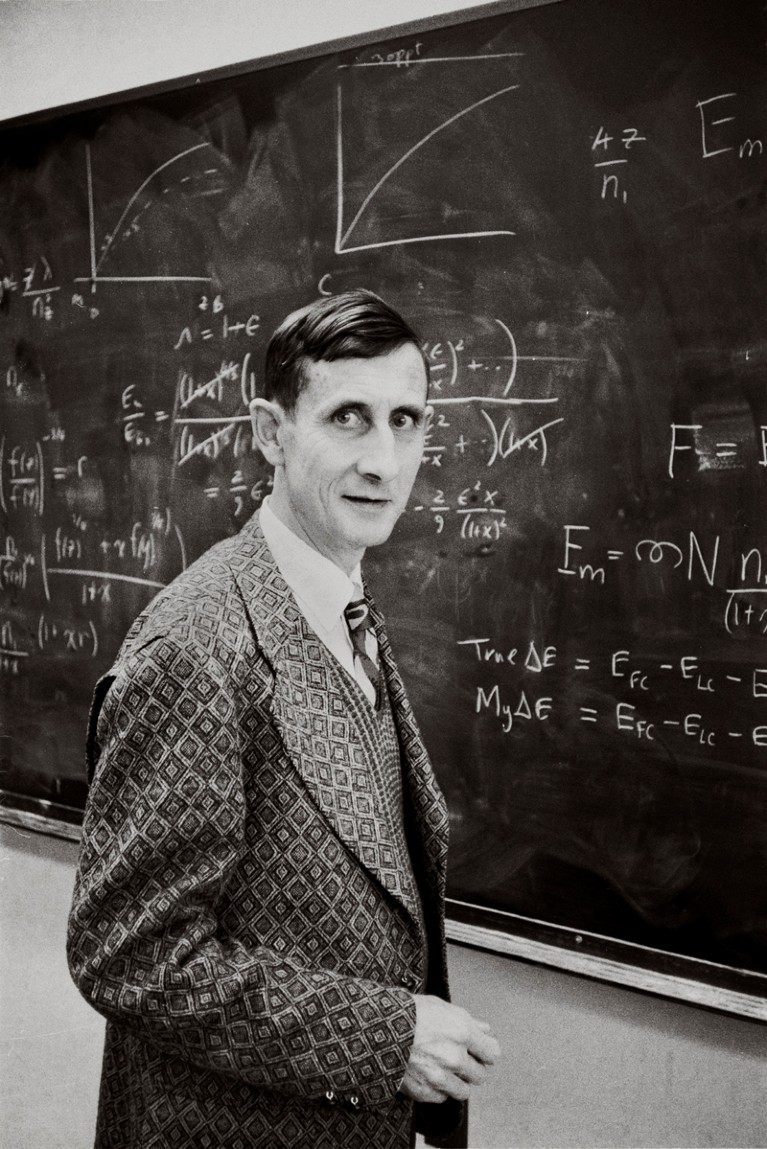
Credit: William E. Sauro/NYT/Redux/eyevine
Freeman Dyson’s influence spanned physics, nuclear disarmament, politics, culture and even science fiction. While still a student, he provided the mathematical grounds for quantum electrodynamics, or QED, to explain the interactions of elementary particles. In 1963, as chairman of the Federation of American Scientists, he helped to craft the Partial Test Ban Treaty, which has largely kept nuclear detonation debris out of the air and ocean. In 1967, he and fellow members of JASON, an independent consortium of scientists advising the US government, successfully argued against the use of tactical nuclear weapons in the Vietnam War. The report was one of many he co-authored over his 50 years as a JASON. Dyson died on 28 February, aged 96.
Dyson was born in Berkshire, UK, and his mathematical skills saw him advance quickly at school and later at the University of Cambridge and in Bomber Command during the Second World War. In 1947, he became a graduate student of the nuclear physicist Hans Bethe at Cornell University in Ithaca, New York. There, he advanced understanding of the subtle interactions between electrons and the electromagnetic field.
He spent the spring semester in almost daily contact with Richard Feynman, and studied for six weeks with Julian Schwinger at a summer school in Michigan. Feynman and Schwinger went on to share a Nobel prize for their work on QED. Dyson’s QED work brought together Feynman’s diagrams and Schwinger’s field model. In 1948, too prodigious to continue as a student, Dyson moved to the Institute for Advanced Study (IAS) at Princeton in New Jersey. There, bombarded by the caustic comments of director J. Robert Oppenheimer, who disliked the new theory, Dyson worked out the final touches of his QED model. He won over Oppenheimer and published his results, and job offers poured in.
Dyson spent most of the rest of his career at the IAS. When he was unable to extend QED to explain the forces in the nucleus, he realized that his curiosity and abilities would be better deployed across a variety of topics. This intellectual restlessness resulted in a blizzard of cross-disciplinary accomplishments.
In 1956, working with physicist Edward Teller at the private company General Atomic near San Diego, California, Dyson designed an ‘intrinsically safe’ nuclear reactor for research applications. Its fuel elements contained a temperature-dependent component; if the core got too hot, neutron absorption would drop, cutting off fission reactions. This design proved to be one of the most popular reactor types ever devised. At General Atomic, Dyson later helped to design a nuclear-bomb-powered space rocket: the Orion propulsion system. For a very brief period (and perhaps never seriously), it was a rival for the chemical-based rockets being developed by the nascent NASA.
In the early 1970s, he and his collaborators proposed ways to reduce the blurring effect of atmospheric turbulence while tracking missiles (and eventually galaxies), by quickly adjusting mirror facets. This system, now called adaptive optics, is a feature of most large optical telescopes.
Dyson was one of the first proponents of a scientific approach to the search for extraterrestrial intelligence. In a paper published in 1960, he proposed scanning infrared rather than radio wavelengths, because heat emissions would be a more likely indicator of life. As one example of how an advanced civilization could operate, this paper described the creation of energy-capturing solar arrays stationed around distant stars (F. J. Dyson Science 131, 1667–1668; 1960). These ‘Dyson spheres’ became fuel for dozens of science-fiction stories, and featured in an episode of the television show Star Trek.
Dyson introduced field theory into the study of condensed-matter physics in the mid-1950s. In the 1960s, he helped to pioneer the use of matrices of random variables to describe a system’s condition in nuclear and solid-state physics; mathematically proved the stability of solid matter; and studied the possibility that fundamental constants of nature change over time. He was the first to provide a detailed scientific description of the very late Universe and he argued that metabolism and replication might have evolved separately in primitive living organisms.
In his first book for the public, Disturbing the Universe (1979), he stressed the need for both science and the sublime. Scientific models were just part of humanity’s way of viewing the cosmos and understanding the complexities of our own species. Art, religion and historical study were all vitally important, too, he argued.
His most conspicuously contrarian views were on climate change. Although not denying that rising atmospheric levels of carbon dioxide would alter global temperature and vegetation, he thought that many of the changes would be beneficial. Furthermore, he argued that models were not sufficiently precise to justify multi-billion-dollar technology ‘fixes’, such as the elimination of fossil fuels. The money would be better spent, he contended, combating hunger, illiteracy and disease.
He was supreme at two things, he said: mathematical calculations and writing. Others would add to those his graciousness and tolerance. He was a frequent speaker and book reviewer, notably for the New York Review of Books, but avoided collaboration, saying that he needed the freedom to vary his interests. All his views, the ortho- and the heterodox, were concerned with the future of the human species. He felt that humans would eventually migrate to permanent colonies in space — for him an exciting prospect. This long view of humanity might be Dyson’s most lasting legacy.

 Books for our time: seven classics that speak to us now
Books for our time: seven classics that speak to us now
 The world's most independent defence science advisers
The world's most independent defence science advisers








